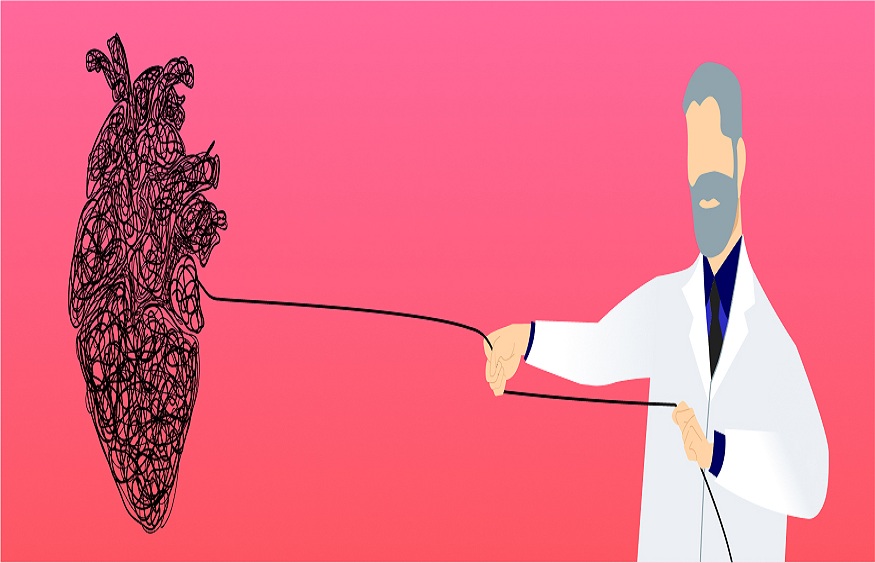Since we covered some of the more common cardiovascular diseases in our last article, we thought it would be interesting to review how they were previously treated.
Medical research and the resulting practical recommendations are evolving; not surprisingly, the treatments for hypertension or myocardial infarction were very different in the 1950s.
We will discuss three fundamental acronyms, hypertension, stroke and MI, and examine how their care has evolved through medical research and development.
HYPERTENSION: FROM FUTILITY TO PUBLIC HEALTH PROBLEM
The management of hypertension has varied enormously over time. Presumed innocent and innocuous, she became the “silent killer”, until she was overtreated.
In the 1940s, hypertension had not yet earned its title as a disease and was part of everyday life. Symptoms were treated with barbiturates and massage. Possible drug treatments for hypertension included thiocyanates (which are no longer used today due to their toxicity) and bismuth.
In the 1950s, it was only advised to treat hypertension if patients had symptoms, including chest pain.
A great upheaval took place in the 1960s and 1970s, in particular thanks to the famous study by Framingham objectifying the link between hypertension and cardiovascular disease. At that time, the development of beta-blockers such as propranolol also revolutionized the direct treatment of hypertension.
Today, the goal is to prevent or reduce the effects of hypertension. Over the decades, many studies have explored the benefits of physical exercise, a low-sodium diet and different drug classes on hypertension.
Blood pressure goals have also changed over time; the latest best practice recommendations agree on 120/80. Higher numbers require lifestyle and dietary adjustment.
treatment is indicated.
These guidelines diverge markedly from the assumptions of the 1950s; measuring the impact of hypertension on health and the evolution of scientific models took decades.
Every year, 15 million people around the world have a stroke; it is a global public health problem.
In the 1970s and 1980s, stroke treatment focused on the symptoms, motor deficits and language disorders in particular, and on the (possible) recovery of loss of function. Stopping the progression of the lesions or identifying the type of stroke were not on the specifications of the emergency doctor. Likewise, imagery was secondary; differentiating an ischemic stroke from a hemorrhagic stroke did not affect its management.
But at the end of the 1980s, the artificial production of tissue plasminogen activator (better known as tPA) by genetic engineering revolutionized the initial treatment of strokes; if an ischemic cause is suspected (and 80% of strokes are ischemic), tPA is administered urgently to dissolve the thrombus.
The advent of thrombolysis has reduced stroke-related mortality by 42% at 10 years (if treatment is performed within the first three hours).
Moreover, when researchers discovered the link between temporality and chances of recovery, many public campaigns on reducing the time between stroke detection and intervention were born. The American Heart Association goes further: “Time lost is brain lost”.
Scientific advances in stroke have radically changed the way we treat them. From symptomatic treatment we went to therapeutic emergency.
MYOCARDIAL INFARCTION: FROM “NATURAL CAUSE” TO PREVENTABLE EVENT
Let’s end our time travel with myocardial infarction, aka heart attack. In the 1950s, no treatment existed. The doctors were giving morphine for the pain and crossing their fingers that the patient wouldn’t go into ACR.
But, as research identified the dangers of tobacco to cardiovascular health, we thought about quitting smoking, reducing cigarette smoking-related heart attacks.
In addition, the development and continuous improvement of CPR protocols have reduced mortality related to cardio-respiratory arrests.
Developed in the 1970s, defibrillators have further increased the rate of survival after a cardiac event.
In the past, a victim of MI was prescribed rest and avoidance of intense physical activity. Today, we know that aerobic exercise reduces the risk of new MI and every coronary patient has their trinitrin close at hand.
Surgically, the 1960s saw the first coronary artery bypass grafting (CABG). Research has proven that CAPs improve long-term survival by preventing recurrence.
The development of defibrillators and bypasses, trinitrin, awareness of the general population on tobacco, physical activity, diet: all have drastically improved the survival of patients today.
Although they are still the leading cause of death in the world, these figures would be much higher without the researchers and their efforts. This research continues to be conducted every day around the world for better treatments and a better understanding of heart disease.
Use the Juisci application to not miss any of the latest publications in cardiology. Every day you will receive your science juices to keep you up to date with the most popular heart health content.



